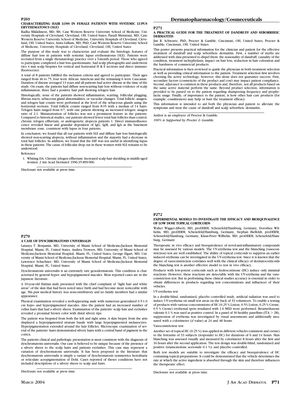Experimental Models to Investigate the Efficacy and Bioequivalence of Low Dose Topical Corticoids
March 2004
in “
Journal of The American Academy of Dermatology
”

TLDR Patients with systemic lupus erythematosus and hair loss had fewer hair follicles and non-scarring alopecia; direct immunofluorescence was not helpful in diagnosing lupus in these cases.
The study aimed to characterize the histologic features of diffuse hair loss in patients with systemic lupus erythematosus (SLE). Over a 3-month period, 8 patients from a single rheumatology practice, aged between 46 and 75, participated by completing a questionnaire, providing scalp photographs, and undergoing scalp biopsies. All patients had active SLE and exhibited diffuse non-scarring hair loss without scalp inflammation. Histological examination showed no signs of inflammation, scarring, or follicular abnormalities, but a decrease in total hair follicles was noted, with one patient having an increased telogen to anagen ratio. Direct immunofluorescence (DIF) identified lupus in four patients. The study concluded that patients with SLE and diffuse hair loss had non-scarring alopecia with a reduction in total hair follicles, and DIF was not useful for identifying lupus in these cases. The underlying cause of follicular drop out in these patients remains unknown.






